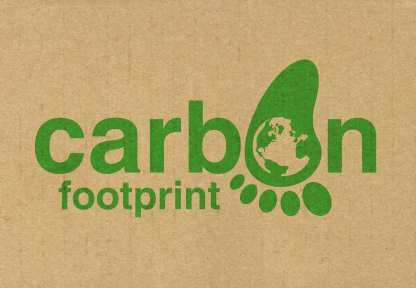University of Vermont, in partnership with Sodexo, recently expanded its Eco-Ware dining sustainability program to include G.ET.’s Eco-Takeouts™. Starting with an initial purchase of reusable takeout containers to support 250 participants, the program is designed to service as many as 300 customers. Each student is charged $7.50 to join the program. This fee covers the cost of the containers, the exchange token, and dishwashing costs. “We knew that the program would have the greatest chance for success if it was financially self-sufficient,” said Tom Oliver, Retail Operations Director for University Dining Services.
And speaking of tokens, University of Vermont doesn’t use the standard plastic chip – it uses cow tags! As the name implies, these are the actual markers farmers use to identify livestock. While no program participant has specifically commented on the use of this unique solution, it is an example of how creative marketing and communication can add spark to a sustainability program.
By Fall 2011, UVM plans to increase the number of locations offering Eco-Takeouts™ from two locations to six, one of which is the college’s highest volume lunch location. The new semester will also bring a ten cent increase in the discount given at the register for reusable container usage, up from the current five cent discount.
I recently had the chance to ask Sodexo Marketing Assistant Jay Taylor and student David Manago some questions about the University’s reusable container program. Here are their responses:
Q: Your committee reviewed several container options. What made you decide that the Eco-Takeouts™ containers are the best solution?
Jay: We were looking for a container that is sturdy, leak-resistant and easy to clean. Our previous containers were flimsy, very leaky and, for some reason, had many nooks that made the containers difficult to clean and even more difficult to perceive as being clean. Sanitation and food safety are very important to us.
David: The container itself is very appealing to the buyer’s eye. It is sturdy, has helpful sections to divide up foods, clasps together well to ensure a tight close, and has a cool green tint to it. It is large enough for a good sized meal, though convenient enough to carry. Compared to other versions, if my memory serves me, this container seems better made, more apt to holding foods, and overall more visually appealing than its predecessors. [non G.E.T. containers used during pilot programs]
Q: What were some of the challenges and objections in launching the Eco-Takeouts™ program and how did you overcome them?
Jay: Accountability was certainly a significant issue with our pilot programs. Our pilot programs did not incorporate an accountability model, and we only received 35% of the containers back by the end of the program. Participation was also a significant issue. In order to spread awareness, we partnered with UVM’s Eco-Reps (peer educators dedicated to promoting ecological living and sustainability to fellow students) and other student groups to spread the word on a peer-to-peer level. To encourage consistent and repeated use of the program, we offer a 5-cent discount to customers every time they use an Eco-Takeouts™ instead of a single-use container, which is roughly the same amount we save.
Feedback has been very positive. We certainly aren’t hearing any complaints! Publicity has helped spread the word about the program.
David: Peer-to-peer education has really made a difference. Here at UVM, we use our Eco-Reps to share ways we can make significant changes to the amount of degradation we force upon our Earth through simple changes in our lifestyles. Eco-Reps educate their fellow students on the simplicity of the program and the BIG impact it makes with regard to UVM’s consumption and waste.
Q: How do you believe using reusable containers supports the overall goal of sustainability?
Jay: University Dining Services has been composting since before composting was cool, and using recyclable and compostable packaging in every instance that we can. Offering Eco-Takeouts™ is the next stop on our journey towards sustainable dining services, and I think it is a particularly important one. Even if compostable and recyclable packaging is sorted properly, the fact of the matter is that it is still packaging that must be collected and transported. By replacing that single-use packaging with reusable packaging, we aim to significantly reduce our environmental impact AND our solid waste management costs.
David: Reusable containers are an easy way to cut consumption and, therefore, waste on campus. For years I’ve ridiculed the [retail locations] due to the sheer amount of waste generated by them, but now it’s possible for these locations to be just as sustainable as the dining halls. This program helps support UVM’s overall goal of sustainability by giving the campus an option towards decreasing overall consumption and waste in a simple way – changing the way we eat.
For more information on University of Vermont’s Eco-Takeouts™ program and other sustainability initiatives, click on the links below.
Eco-Ware Facebook Page
http://Facebook.com/EcoWareAtUVM
Article published by UVM Communications:
http://www.uvm.edu/~uvmpr/?Page=news&storyID=11507
Article (similar to previous) published by Packaging Digest:
http://www.packagingdigest.com/article/512462-University_of_Vermont_launches_Eco_Ware_reusable_take_out_container_program.php
Article in Campus Newspaper:
http://www.vermontcynic.com/green-to-go-1.2446822


